Remember when Monday mornings meant rushing to the office coffee pot to dish about what happened on your favorite show? Back in the ’60s and ’70s, television was appointment viewing—no DVRs, no streaming, just you, your family, and millions of other Americans all watching the same thing at the same time. The next day’s conversations were pure gold, filled with gasps, theories, and that universal question: “Did you see what happened last night?”
1. All in the Family
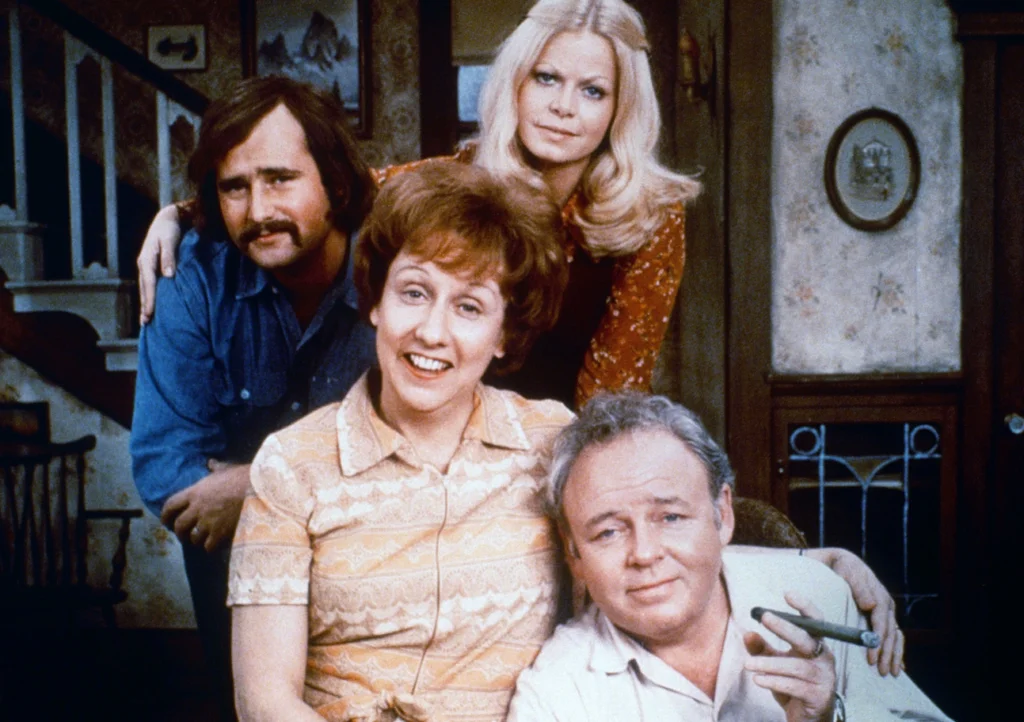
Archie Bunker didn’t just sit in his chair—he sparked a revolution in living rooms across America. Norman Lear’s groundbreaking sitcom tackled everything from politics to prejudice with a boldness that left audiences either cheering or clutching their pearls. Every episode was a lightning rod for discussion, forcing families and coworkers to confront uncomfortable truths wrapped in comedy. Beyond the watercooler, Time Magazine credits the characters of this show with changing not just television but American culture as a whole.
The show’s genius lay in making bigotry look foolish while addressing real social issues head-on. Archie’s malapropisms and narrow-minded rants became the perfect setup for teachable moments that resonated far beyond the screen. Whether you loved him or wanted to shake some sense into him, you couldn’t stop talking about what the Bunker family was up to.
2. The Mary Tyler Moore Show
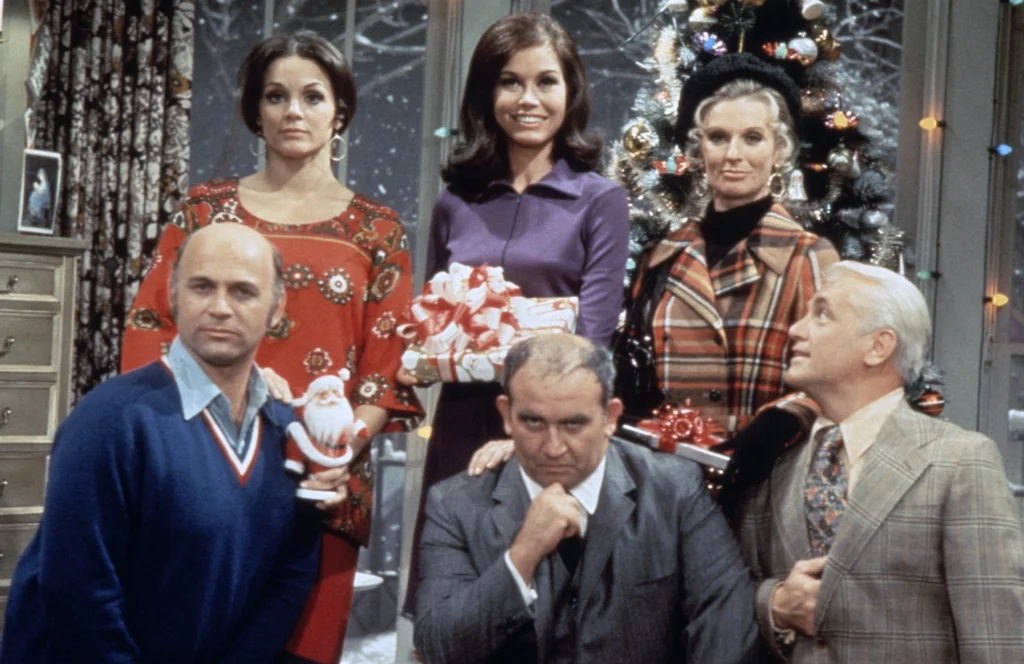
Mary Richards wasn’t just tossing her hat in the air—she was tossing out the old rules about what a single woman could be on television. Her Minneapolis newsroom became the backdrop for workplace comedy that felt refreshingly real and relatable. Every Saturday night, viewers watched Mary navigate career challenges, friendships, and independence with a grace that made her everyone’s favorite neighbor. Moore’s legacy is extensive, and Vox lays out the many ways she shaped the entertainment landscape we loved to chat about at work.
The show’s ensemble cast created a workplace family that mirrored what many viewers experienced in their own offices. From Lou Grant’s gruff exterior hiding a heart of gold to Sue Ann’s perfectly passive-aggressive dinner party drama, each character sparked conversations about workplace dynamics. Mary’s romantic mishaps and career victories gave women something to aspire to and men a new perspective on the changing times.
3. M*A*S*H
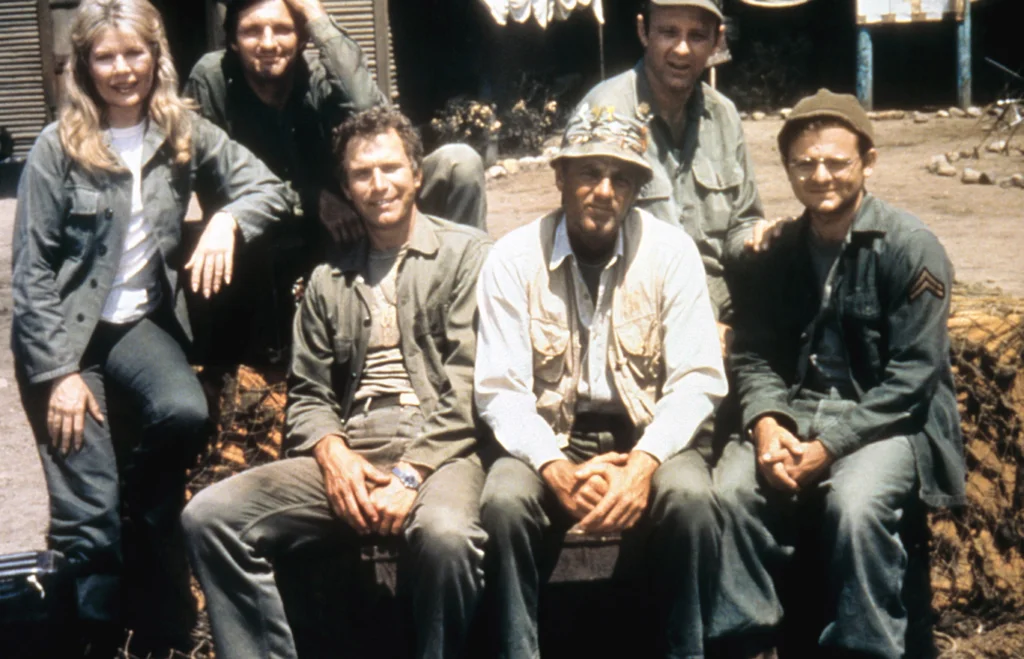
The 4077th Mobile Army Surgical Hospital became America’s favorite refuge during turbulent times, blending laughter with tears in ways no one expected. Hawkeye Pierce and his fellow surgeons delivered medicine with a side of humor that helped viewers process the absurdity of war. Each episode walked the tightrope between comedy and drama, leaving audiences emotionally invested in characters who felt like old friends. Even over fifty years later, USA Today assembled an extensive rundown of how this wartime dramedy set television records that were previously unthinkable.
The show’s ability to tackle serious subjects through comedy made it perfect conversation fodder for a generation dealing with Vietnam and social upheaval. Whether debating Hawkeye’s latest prank or discussing the deeper meaning behind a particularly poignant episode, M*A*S*H gave viewers plenty to chew on. The series finale alone provided months of watercooler analysis as America said goodbye to characters who had become part of the family.
4. The Twilight Zone
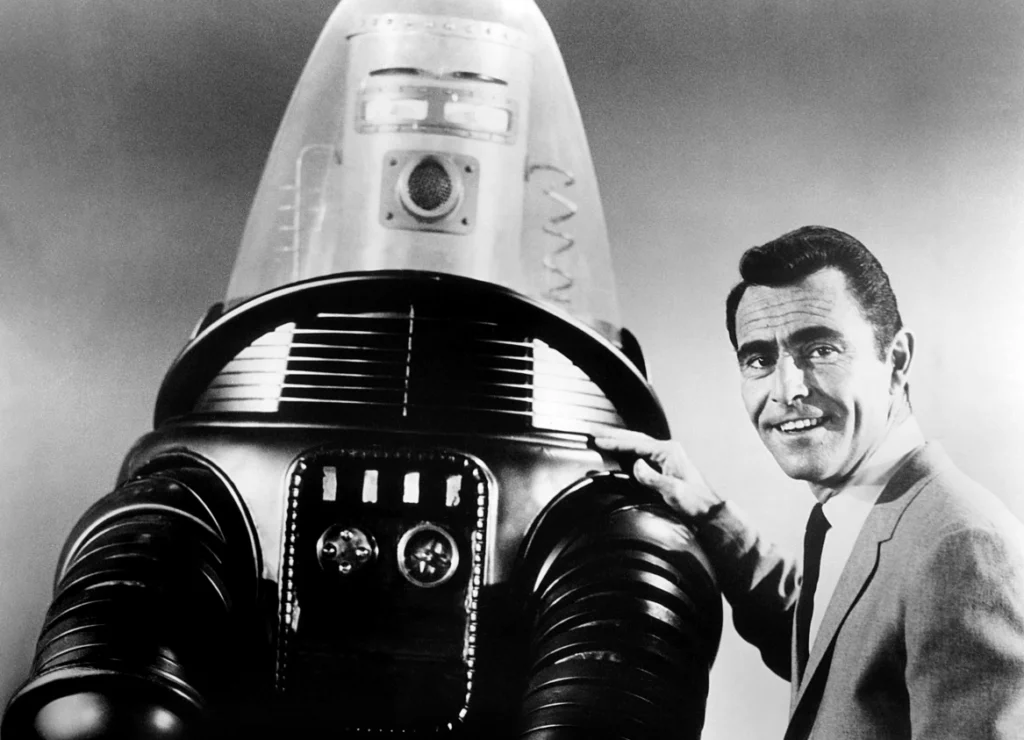
Rod Serling’s anthology series turned everyday situations into mind-bending journeys that left viewers questioning reality itself. Each standalone episode was a perfectly crafted puzzle box that opened up discussions about human nature, technology, and the unknown. The show’s twist endings became legendary, spawning countless “Did you see that coming?” conversations around office coffee machines.
The beauty of The Twilight Zone lay in its ability to make viewers think long after the credits rolled. Episodes like “The Monsters Are Due on Maple Street” or “Time Enough at Last” became cultural touchstones that people referenced for decades. The show’s exploration of paranoia, conformity, and moral dilemmas resonated with audiences navigating the Cold War era, making it essential viewing and even better conversation.
5. Bonanza
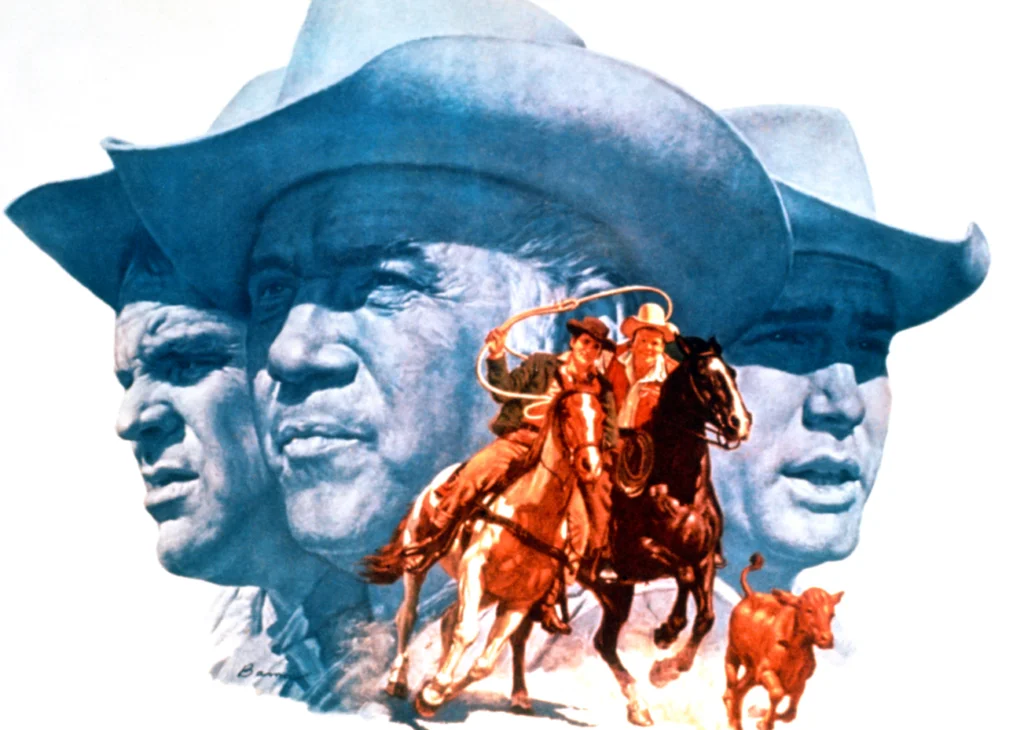
The Cartwright family’s Ponderosa Ranch became America’s favorite Sunday night destination, offering wholesome entertainment with just enough drama to keep things interesting. Ben Cartwright and his three sons tackled everything from family conflicts to frontier justice with a moral compass that viewers could admire. Each episode delivered clear-cut heroes and villains in a world where right and wrong weren’t always obvious in real life.
The show’s massive popularity meant that Monday morning conversations often centered on the latest Cartwright adventure or family lesson. Viewers debated which son was their favorite, discussed the guest stars, and analyzed the moral messages woven into each story. Bonanza’s fourteen-year run gave families a shared viewing experience that transcended generations, creating bonds through storytelling that lasted long after the campfire went out.
6. The Ed Sullivan Show
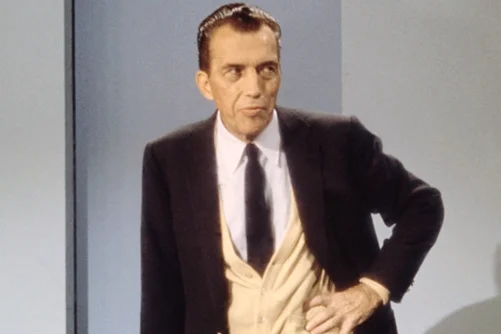
Sunday nights belonged to Ed Sullivan, whose variety show became America’s premier showcase for entertainment that ranged from the sublime to the absolutely bizarre. Sullivan’s stone-faced introductions of everything from opera singers to dancing bears created a unique viewing experience that guaranteed Monday morning discussions. The show’s eclectic mix meant there was always something for everyone to talk about, whether they loved it or were completely bewildered by it.
The Beatles’ appearances alone generated enough conversation to fuel offices for months, but Sullivan’s talent for discovering new acts kept audiences coming back week after week. From Elvis’s controversial hip movements to puppet acts that defied explanation, the show provided a shared cultural experience that united viewers in wonder and confusion. Sullivan’s ability to present high art alongside pure spectacle created television moments that became permanent fixtures in American pop culture memory.
7. Laugh-In
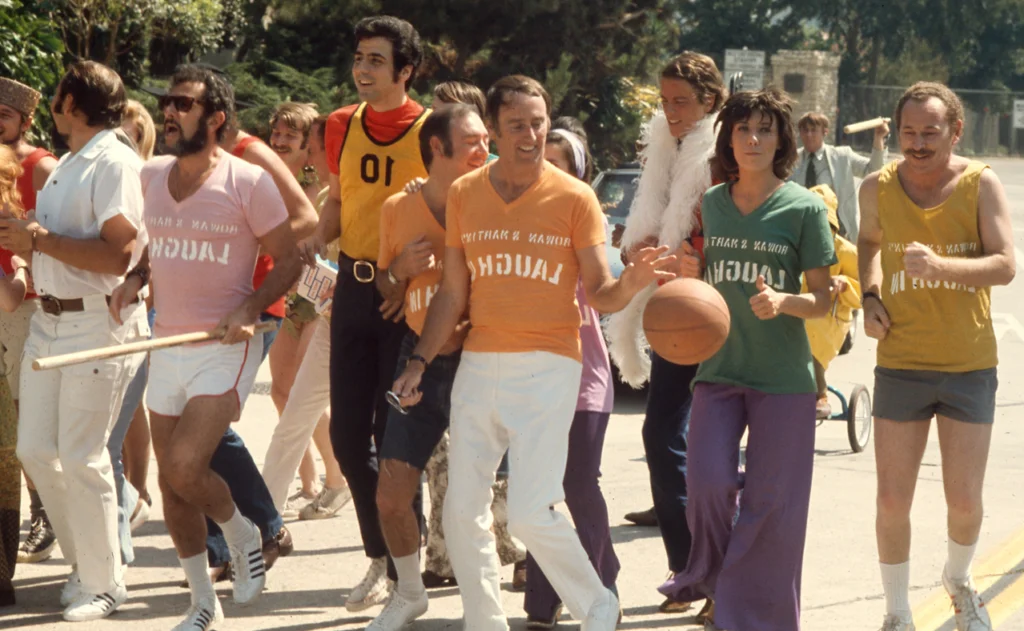
“Sock it to me” wasn’t just a catchphrase—it was a cultural phenomenon that had everyone from grandparents to teenagers repeating the same silly jokes. Rowan & Martin’s rapid-fire comedy show broke television conventions with its psychedelic colors, go-go dancers, and political satire that pushed boundaries. The show’s anything-goes format meant viewers never knew what to expect, creating appointment television that demanded immediate post-show analysis.
The program’s influence on popular culture was immediate and undeniable, with catchphrases and running gags becoming part of everyday conversation. Political figures like Richard Nixon’s “Sock it to me?” cameo created watercooler buzz that bridged entertainment and current events. Laugh-In’s ability to make politics funny while keeping comedy relevant turned Monday morning discussions into mini comedy shows as coworkers tried to recreate their favorite sketches and one-liners.
8. The Carol Burnett Show
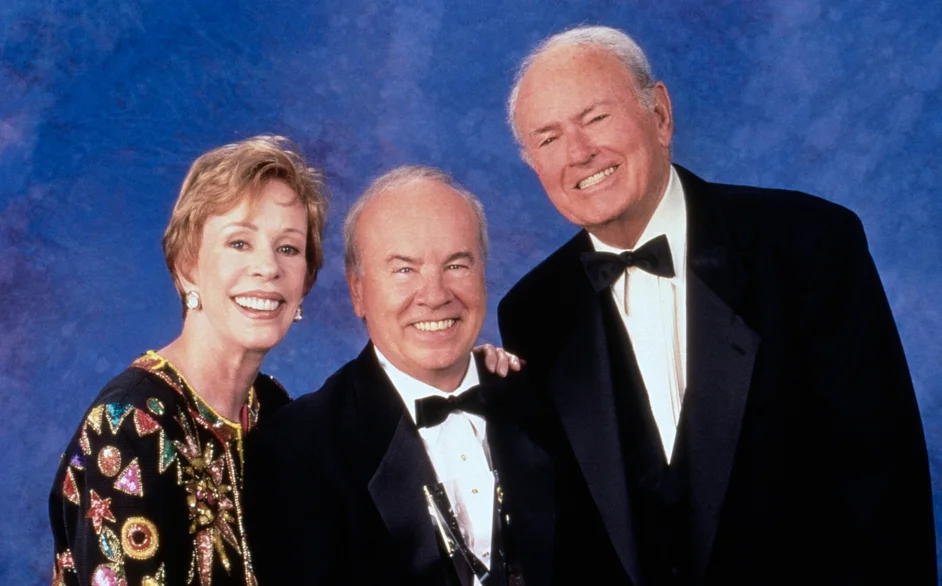
Carol Burnett’s variety show turned Saturday nights into family affairs where multiple generations could laugh together at carefully crafted comedy. Her talented ensemble cast, including Harvey Korman, Vicki Lawrence, and Tim Conway, created characters and sketches that became instant classics. The show’s blend of musical numbers, guest stars, and improvisational moments provided enough material to fuel a week’s worth of office entertainment.
The program’s famous costume malfunctions, like Carol’s curtain rod dress, became legendary moments that people discussed for years. Tim Conway’s ability to make Harvey Korman break character became a running joke that audiences anticipated and celebrated. Carol’s ear-tugging goodbye to her grandmother and the show’s intimate closing moments created a personal connection that made viewers feel like they were part of the Carol Burnett family.
9. The Tonight Show Starring Johnny Carson
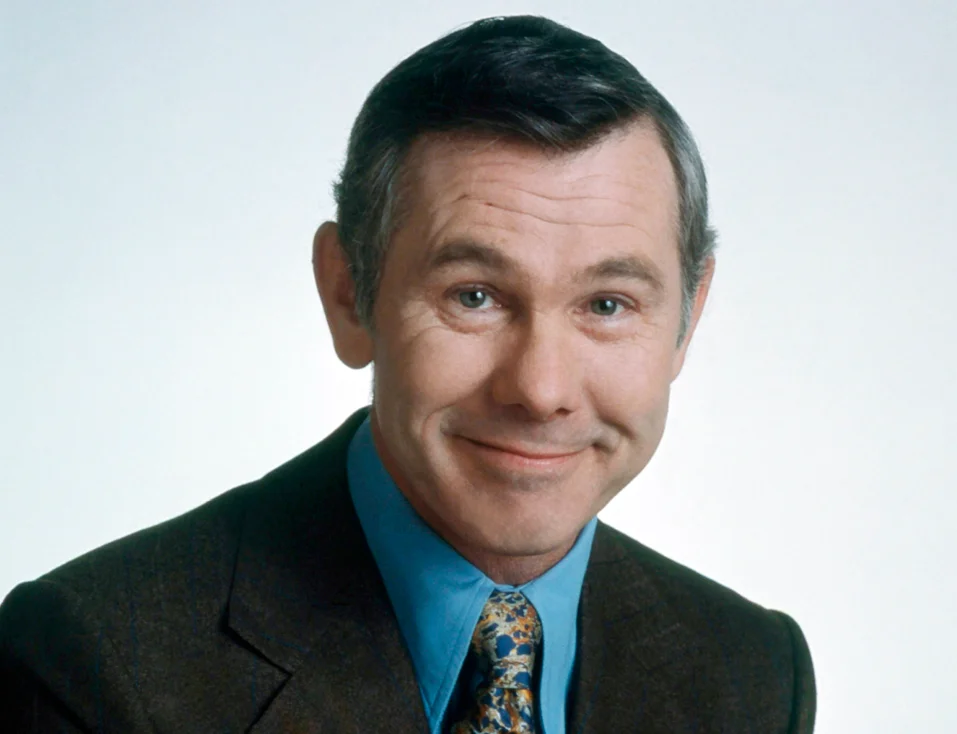
Johnny Carson’s monologue wasn’t just comedy—it was America’s nightly news commentary delivered with perfect timing and a mischievous smile. The Tonight Show became the country’s unofficial town square where current events were dissected, celebrities were interviewed, and cultural moments were created. Carson’s ability to make topical humor accessible to everyone meant his jokes became the next day’s conversation starters.
The show’s unpredictable moments, from animal visits gone wrong to Carson’s interactions with unusual guests, provided endless fodder for workplace discussions. Ed McMahon’s “Heeere’s Johnny!” became as famous as Carson himself, while characters like Carnac the Magnificent gave audiences inside jokes that created shared cultural experiences. Carson’s thirty-year reign meant that multiple generations grew up with the same comedic reference points, making his show a unifying force in American entertainment.
10. Columbo
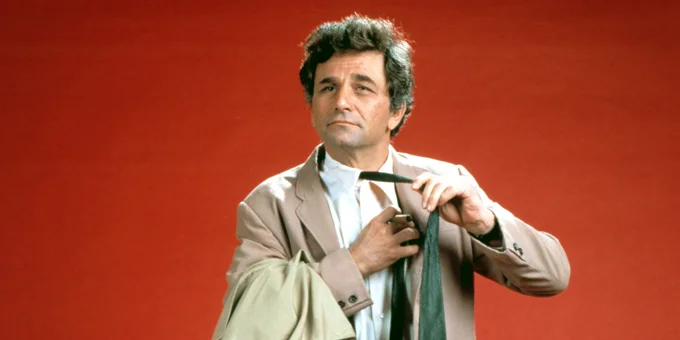
Lieutenant Columbo’s rumpled raincoat and absent-minded demeanor masked one of television’s most brilliant detective minds, creating mystery stories that had audiences playing along from their living rooms. Peter Falk’s portrayal of the seemingly bumbling detective who always got his man became appointment television for mystery lovers. The show’s “howcatchem” format, where viewers saw the crime committed, made the fun about watching Columbo piece together the clues.
The detective’s famous “just one more thing” catchphrase became a cultural touchstone that people used in everyday conversation long after the show ended. Columbo’s working-class sensibility and ability to outwit wealthy, arrogant criminals resonated with audiences who enjoyed seeing the underdog triumph. Each episode’s cat-and-mouse game between Columbo and his suspects provided plenty of material for Monday morning discussions about clues, red herrings, and that satisfying moment when the truth was finally revealed.
11. Sanford and Son
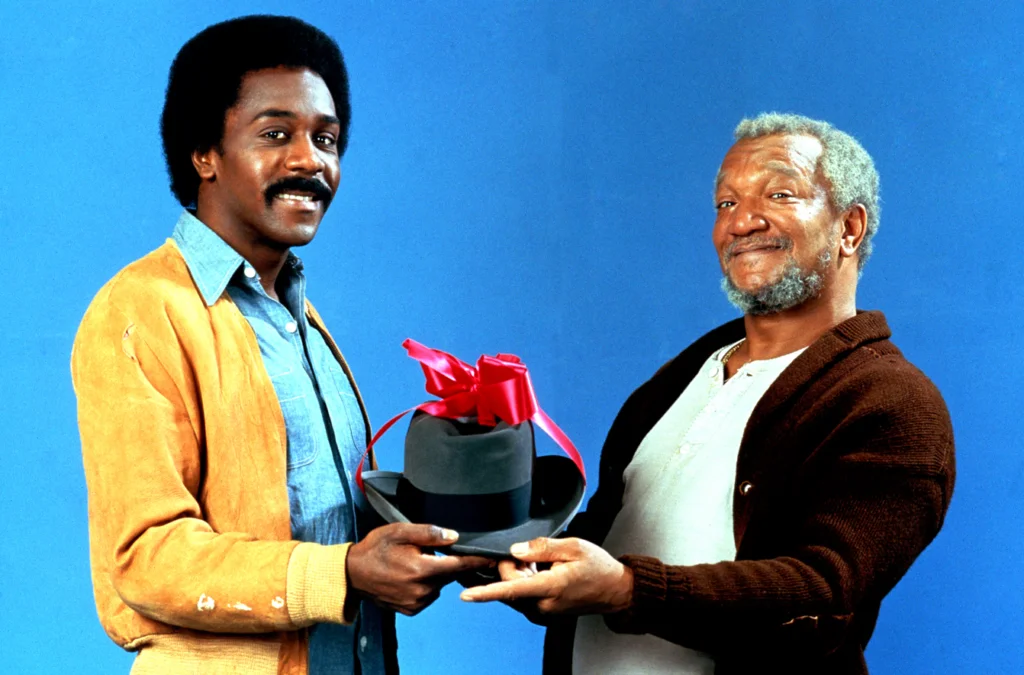
Fred Sanford’s junkyard became comedy gold as Redd Foxx brought his nightclub humor to mainstream television with surprising heart. The show’s father-son dynamic between Fred and Lamont tackled generational differences with humor that resonated across cultural lines. Fred’s fake heart attacks and get-rich-quick schemes provided laughs while exploring themes of family loyalty and aging that spoke to universal experiences.
The series broke new ground by presenting African American characters as complex, flawed, and hilariously human rather than stereotypical caricatures. Fred’s interactions with his neighbors, particularly his relationship with Aunt Esther, created comedic moments that had audiences quoting lines for decades. The show’s success in depicting working-class struggles with dignity and humor gave viewers plenty to discuss about family dynamics, economic challenges, and the changing landscape of American television.
12. The Odd Couple
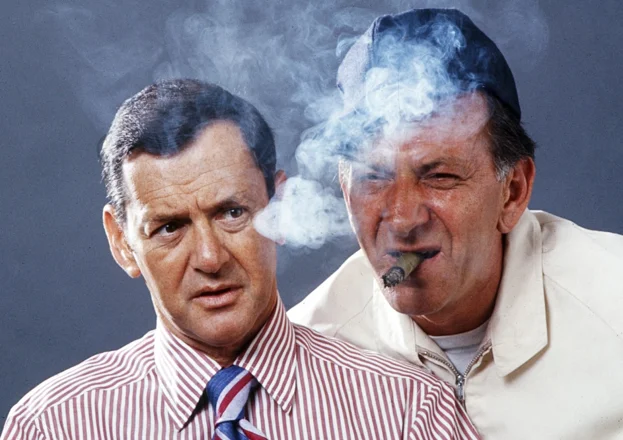
Felix and Oscar’s mismatched roommate situation turned everyday domestic life into comedy gold that resonated with anyone who’d ever lived with someone completely different from themselves. The show’s exploration of friendship, compromise, and cohabitation created relatable scenarios that had audiences comparing their own living situations to the Madison Square Garden duo. Tony Randall and Jack Klugman’s perfect chemistry made their characters’ neuroses and quirks feel authentic rather than forced.
The series’ strength lay in finding humor in ordinary situations that everyone could identify with, from household chores to social interactions. Felix’s obsessive cleaning and Oscar’s slovenly habits represented extremes that most viewers could see reflected in their own relationships and living arrangements. The show’s ability to mine comedy from personality conflicts while maintaining the underlying friendship between its leads provided rich material for discussions about compatibility, tolerance, and the lengths people go to maintain relationships.
13. The Partridge Family

The musical Partridge clan turned family entertainment into a multimedia phenomenon that had kids begging their parents for musical instruments and tour buses. David Cassidy’s Keith Partridge became a teen heartthrob whose popularity extended far beyond the television screen, creating a cultural moment that bridged music and television. The show’s wholesome family values combined with catchy pop songs created a perfect storm of entertainment that appealed to multiple generations simultaneously.
The series’ success spawned real musical careers, merchandise, and a fan following that demonstrated television’s power to create genuine cultural phenomena. The Partridge Family’s colorful bus and matching outfits became iconic symbols of early ’70s optimism and family togetherness. Whether viewers were discussing the latest episode’s plot or debating which Partridge sibling was their favorite, the show provided safe, family-friendly conversation topics that brought different generations together around shared entertainment experiences.
14. The Brady Bunch
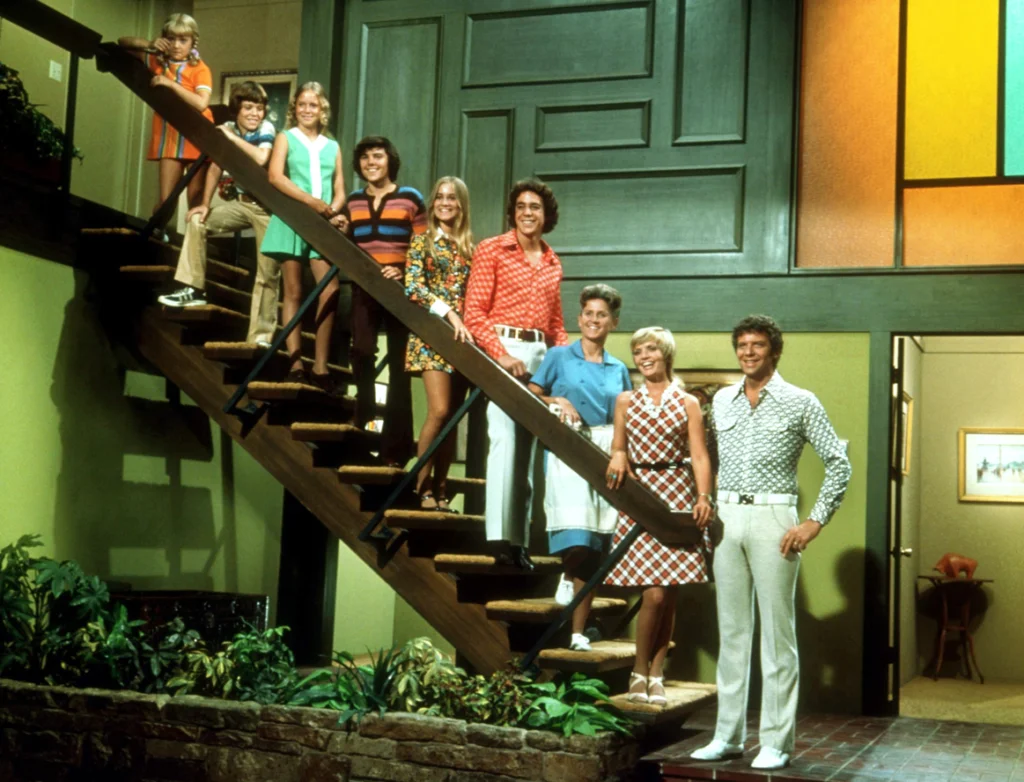
The Brady family’s blended household tackled the complexities of modern family life with a sunny optimism that made even the most mundane problems seem solvable. Six kids, two parents, and a housekeeper created endless opportunities for comedic misunderstandings and heartwarming resolutions that reflected America’s changing family structures. Each episode’s moral lesson was delivered with such earnestness that viewers couldn’t help but discuss the latest Brady crisis and its inevitable happy ending.
The show’s popularity extended far beyond its original run, with Brady references becoming shorthand for wholesome American family values. From Marcia’s broken nose to Greg’s voice changes, the Brady kids’ growing pains became shared cultural experiences that connected viewers across generations. The series’ ability to make family dysfunction look manageable and even charming gave audiences hope that their own family challenges could be resolved with patience, understanding, and maybe a little help from Alice the housekeeper.
Those watercooler conversations weren’t just idle chatter—they were the threads that wove our shared cultural fabric together. In an era before social media and instant communication, these shows gave us common ground, shared experiences, and endless material for Monday morning discussions. The magic wasn’t just in the shows themselves, but in the conversations they sparked, the connections they created, and the memories they gave us that we’re still talking about today.


